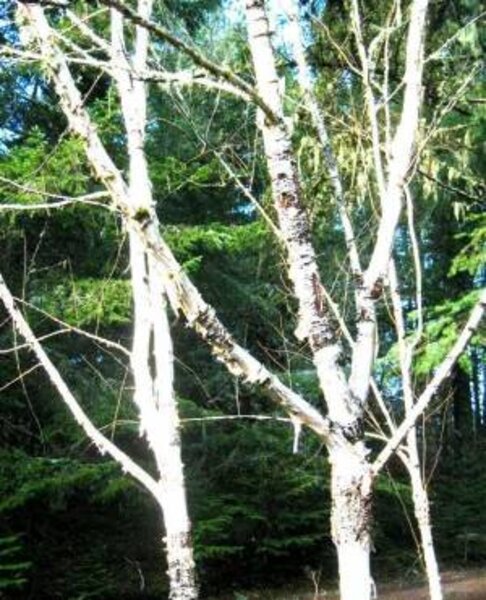How to choose trees that will encourage birds to hang around your yard
Loading...
Any water source in your garden is a bird magnet. You can encourage birds to stick around by introducing bird-friendly trees. Now – during the indoor season – is the time to plan for spring, so consider which bird trees you might want to put on your winter wish list.
Because there’s nothing more painful in gardening than having to take down an improperly-sited tree — and one in the wrong place is a rotten legacy to leave a future homeowner — consider carefully where to place your tree, and what kind of tree you need. Here’s where winter gives you a break, because you’ve got time to do your homework.
Shapes and sizes
Is the tree fast or slow-growing? Don’t be seduced by the promise of instant size. Some fast-growers are fine, but others are weak in branching or possess aggressive roots that can come up in inopportune places around your garden — I’m thinking of a silver maple (Acer saccharinum) I once battled. One edition of The Sunset Western Garden Book called that variety “a bad actor.”
What will the eventual height look like in your yard? You can get some idea if you figure each story of a house is roughly 10 feet tall. Your own out-stretched arms are approximately equal to your height, so walk around your yard and use your body to measure future diameters — how far away from that fence should you plant?
Consider size of scale when locating trees, especially near water features. In many cases, it’s best to stick with smaller-statured specimens. Two notes of caution regarding size. No. 1: Many dwarf conifers are not true dwarfs but simply very slow growing — some are measured in mere inches of growth per year— but eventually they may outspread the best planning.
And caution No. 2: The labels on larger shrubs and trees often tell you how big the plant will be in 10 years, not its size at maturity. So do some reading in more than one good plant encyclopedia for a complete understanding of what you’ve got.
Bird-attractive tree choices
Google “bird-friendly plants,” and you’ll find a massive amount of information. Here are three of my favorite bird trees to get you started.
Birches are classic around water. If you have the space for these 40- to 70-footers, they look fabulous reflected in a pool, and the small cone-like hanging fruits are a bird treat. However, many varieties are susceptible to bronze birch borer. The American native paper birch (Betula papyrifera) is more resistant than the European birch (B. pendula). Usually, however, the weather in the South (Zone 7 and higher) is too warm for either.
And even though the bark isn’t white, you won’t go wrong with the river birch (B. nigra ‘Heritage’) which is not affected by borers. The mature textured bark is cinnamon-red. For a dwarf river birch (to 10 feet tall), try B. nigra ‘Little King’.
I love crab apples, and have planted many in my garden. I appreciate their brightly-colored fruit, which lingers into winter, as well as their early spring blossoms, interesting growth habits and good fall color. Disease-resistant varieties, such as Malus ‘Sugar Tyme’ and M. ‘Prairifire’ are good choices.
For elegant and tiny, you can’t beat the weeping crab, M. Sargentii ‘Tina’. At only five feet tall, the tops of its pendulous branches are perfect bird perches — great next to smaller pools.
Fruiting mulberry trees should be planted well back from water, and underplanted with shrubs that will hide the fruit litter. This tree is messy, but beloved by birds. (The fruit is edible for humans as well.) The American native, red mulberry (Morus rubra) will grow to 40 feet, while the contorted mulberry (M. bombycis ‘Unryu’ aka ‘Tortuosa’) can reach 20 feet with attractive twisting branches. Or consider the six to eight foot drama of a dwarf weeping mulberry with dark fruit to satisfy you or your bird pals.
Next post, I’ll talk about shrubs that give another layer where birds can hang out near water.
Mary-Kate Mackey, co-author of “Sunset’s Secret Gardens — 153 Design Tips from the Pros” and contributor to the “Sunset Western Garden Book,” writes a monthly column for the Hartley Greenhouse webpage and numerous articles for Fine Gardening, Sunset, and other magazines. She teaches at the University of Oregon’s School of Journalism & Communication. She writes about water in the garden for Diggin’ It.
Editor’s note: To read more by Mary-Kate, see our blog archive. The Monitor’s main gardening page offers articles on many gardening topics. See also our RSS feed. You may want to visit Gardening With the Monitor on Flickr. Take part in the discussions and get answers to your gardening questions. If you join the group (it’s free), you can upload your garden photos and enter our next contest.





